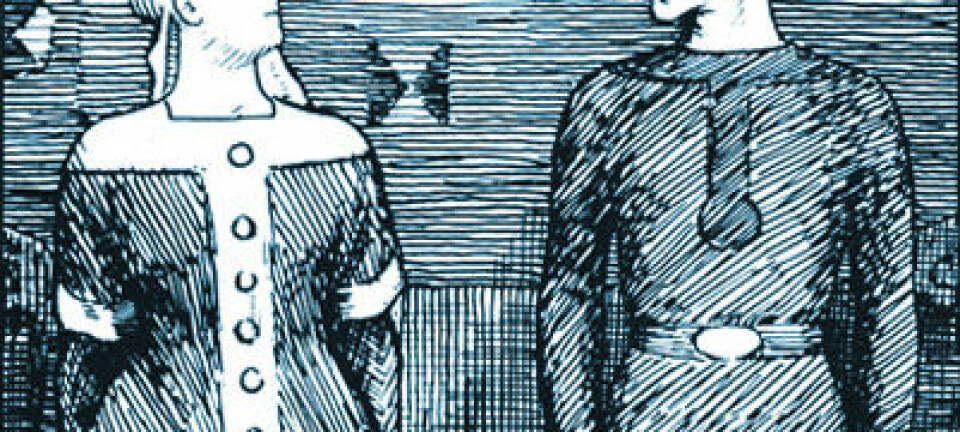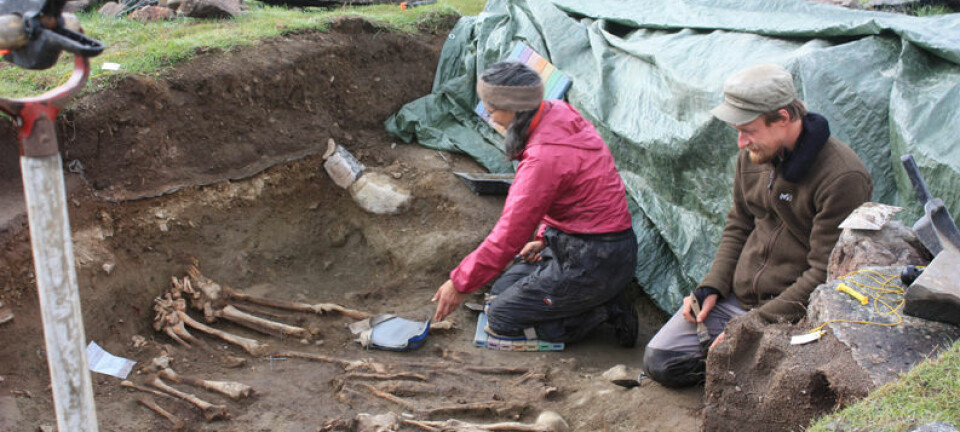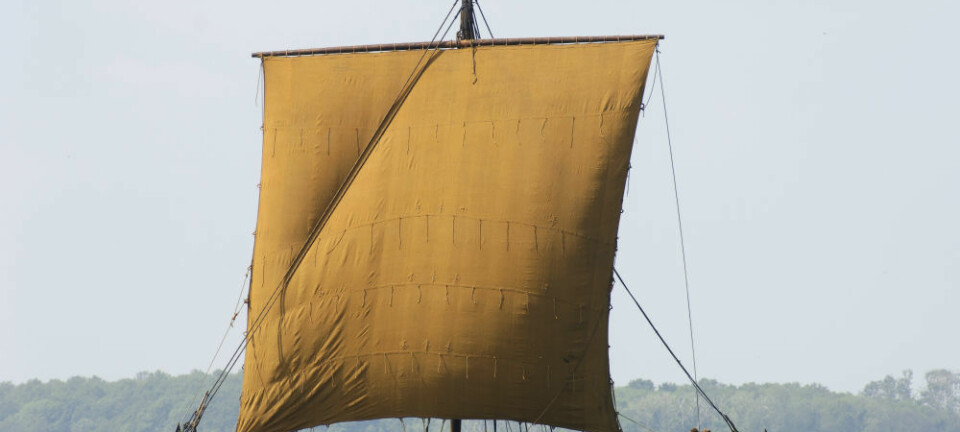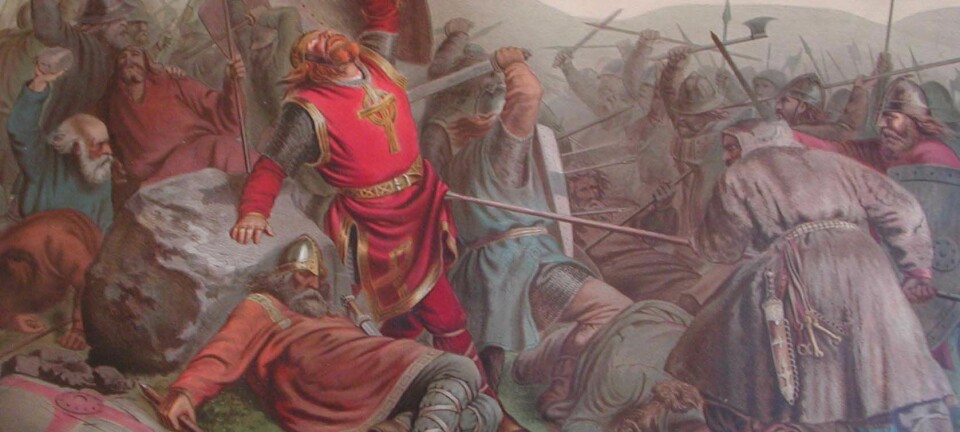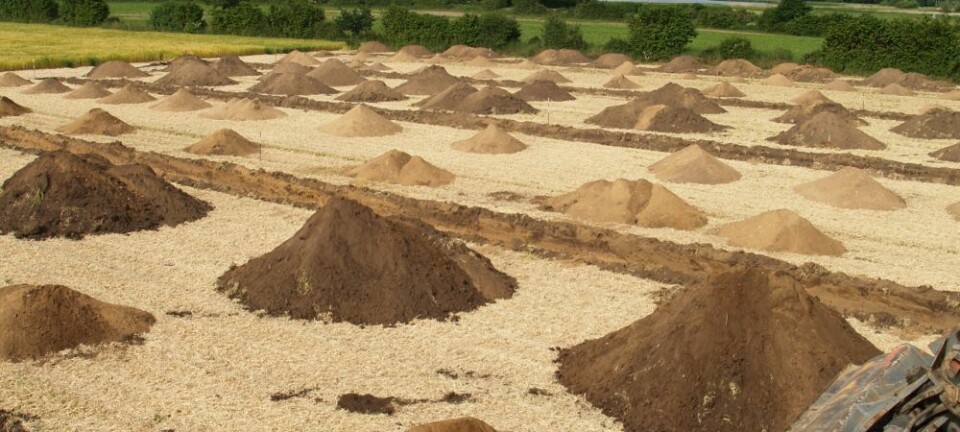An article from University of Oslo
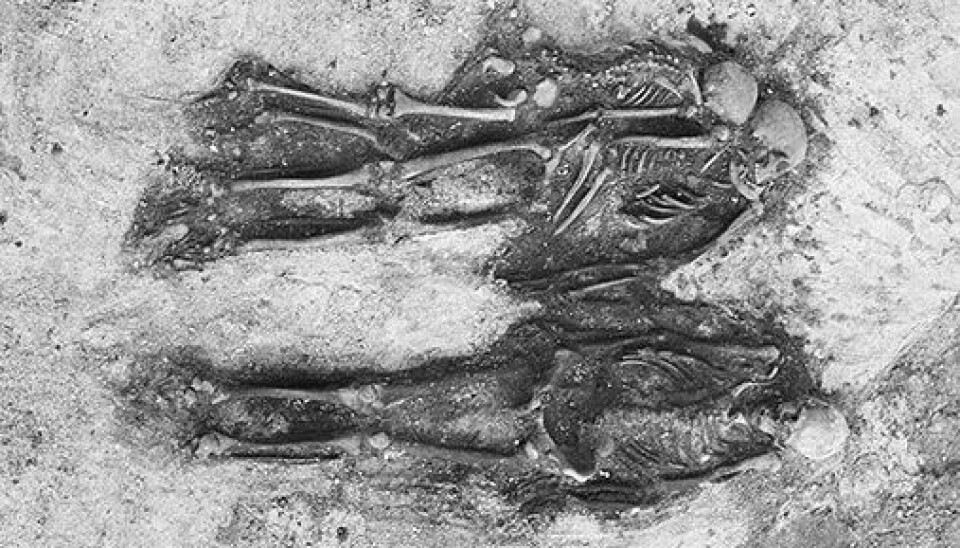
Double graves with headless slaves
In the Viking era, a number of slaves were beheaded and then buried together with their masters. New methods of skeleton analysis reveal more about the life of the poor a thousand years ago.
Denne artikkelen er over ti år gammel og kan inneholde utdatert informasjon.
How was life for common people in Norway during the period 400–1050 AD? Can we learn more? Yes, according to Elise Naumann, research scholar in archaeology.
By using isotope analysis to examine ancient skeletons, she has made several new discoveries.
The material includes skeletons from a total of ten individuals, found at Flakstad. At least three of these, which were found in double and triple graves, are headless.
The isotope analyses, combined with analyses of ancient DNA, provide grounds to hypothesize that the headless skeletons were slaves who were decapitated before being buried along with their masters.
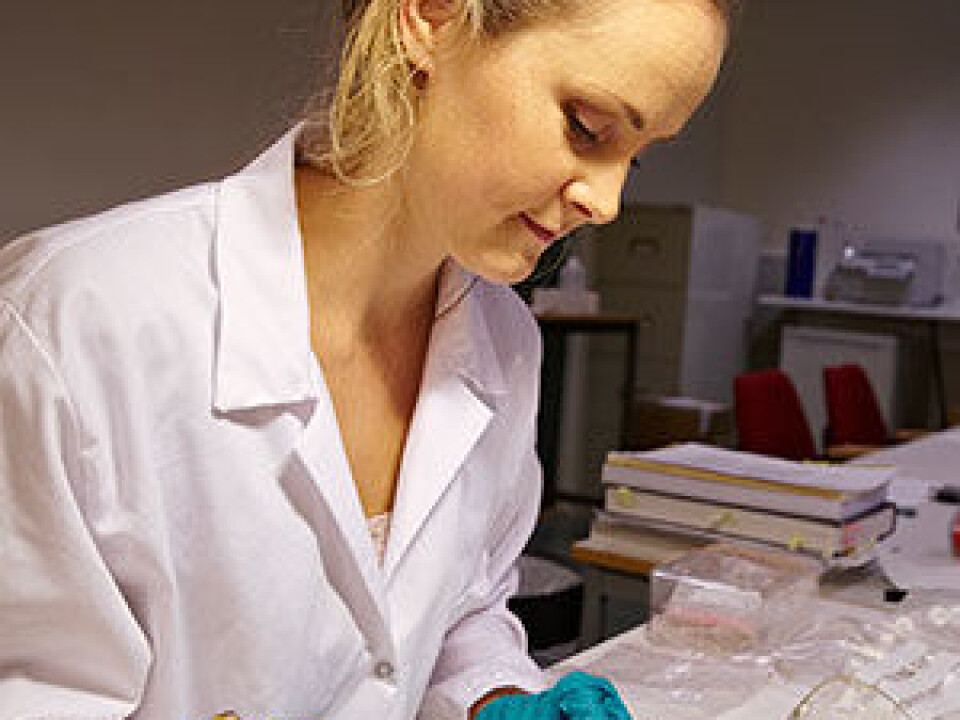
"This says a lot about the great differences between people in the society of the day. Life was undoubtedly difficult and brutal for the majority of people. Only a very few were privileged," says Naumann
However, there is nothing new about the fact that slaves in the Viking era were buried along with their masters, and in some cases also beheaded before burial, Elise Naumann points out.
"On the contrary, we build on earlier grave finds of this type which suggest that slaves were sometimes bound hand and foot."
What is new about this, she explains, is how the scientific analytical methods used and the results they produce give fresh insights into the society and people of the past. Isotope analyses in combination with osteological analysis gives us information about people's diet and health. Analyses of ancient DNA (aDNA) yield knowledge about genealogy and genetics.
Differences in diet reveals different lives
In her dissertation work, Naumann has investigated the skeletons from a total of 56 individuals buried in single, double or triple graves. Most of them were found in the three northernmost counties of Norway and date from the period 400-1050 AD.
"Hardly any isotope analyses of skeletal material from this period have been performed before," says Naumann.
The analytical method, combined with examinations of ancient DNA, have provided information not only about diet, but also about social relations. This is the case for the skeletons from Flakstad.
"The genetic analyses of the Flakstad Vikings show that the people buried there were most likely not related through the maternal line. The isotope analyses show major differences in diet", she says.
The headless skeletons, like certain other poor individuals included in the study, had a diet consisting largely of fish. The other people in the graves had eaten much more land-based foods, including meat.
The results of Naumann's research suggest that people of rank ate more meat and other animal products than the poor did. The results are also interpreted based on the knowledge that the meat of animals held a special significance in religious contexts during the Iron Age in Scandinavia.
"Dietary differences is a matter of more than just what was eaten. Food was a matter of life and death at the time. Differing diets therefore reflect differences in social status, different lives."
Surprisingly large differences
One of Naumann's goals has been to shed light on the lives of common people during the Viking era.
"Attention has primarily been paid to the graves of the wealthy, which contained a lot of grave goods for archaeologists to examine. Analyses of skeletal material can also give us insight into the lives of those who didn't leave much behind in the world," she says.
A grave is also the result of the choices made by those who were left behind, Naumann points out. The analyses of skeletons, on the other hand, provide information about the lives that was lived.
"There are no hidden agendas in the results of isotope analysis," says the researcher.
Further investigation into the life cycle of the past
The research suggests that distribution of food and meals was a significant structuring factor for Iron Age society in Norway, Naumann concludes.
"I am in the process of writing a new scientific article based on my doctoral work. Double graves is also my point of departure for this article, but in these ones, the people buried together might in some cases have been related to one another."
What's interesting in this case, she says, is that one finds large differences in diet even within the same household. Additionally, the isotope analyses reveal differences in diet both between men and woman, and between adults and children.
"Men travelled more than women, they may therefore have eaten more fish," says Naumann.
"And although we know little about the scope of the practice, it may have been common to put children in foster care with people of lower social status, for example slaves or servants. It is likely that the children's diet would have been affected by this. This may partly explain why the isotope analyses show that many people had different diets as adults than they did when they were children."
"It is possible to use isotope analyses to learn about an individual's life cycle – about their journey through life. This is something I want to study further. I see a great potential in more advanced use of isotope analysis."








